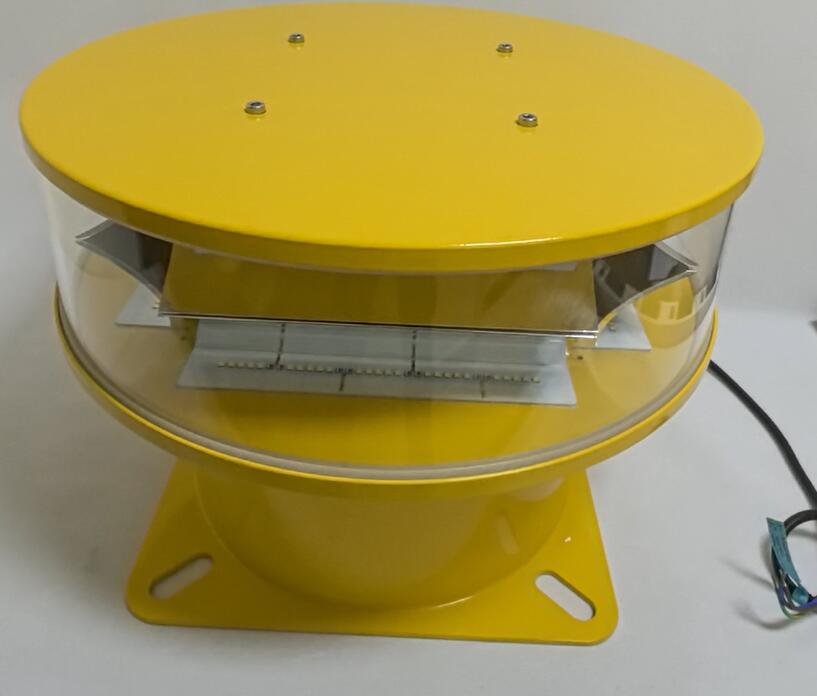FAA Obstruction Lighting: The Gold Standard in Aviation Safety Compliance
In the complex airspace of modern aviation, FAA obstruction lighting systems serve as critical safeguards, ensuring that tall structures do not become invisible hazards to aircraft. Regulated by the Federal Aviation Administration (FAA), these lighting solutions prevent collisions, enhance navigational safety, and comply with stringent federal standards. This article explores FAA lighting requirements, technological advancements, and best practices for implementation.
Why FAA Obstruction Lighting Matters
1. Preventing Mid-Air Collisions
Makes towers, buildings, and wind turbines visible to pilots.
Essential during nighttime, fog, and low-visibility conditions.
Works alongside radar and GPS systems for redundancy.
2. Regulatory Compliance
Mandatory for structures exceeding 200 feet (61 meters).
Non-compliance can result in fines and legal liability.

Required for FCC, FAA, and local aviation authority approvals.
3. Supporting Urban Air Mobility (UAM)
Ensures drones and eVTOLs (electric vertical takeoff aircraft) can navigate safely.
Adapts to evolving air traffic patterns in smart cities.
| FAA Obstruction Lighting |
FAA Lighting Standards: Key Requirements
The FAA’s Advisory Circular (AC) 70/7460-1L outlines obstruction lighting rules:
Types of FAA-Approved Lights
Light Type Application Visibility Requirement
L-810 (Red, Low Intensity) Structures < 150 ft (45m) 3-5 nautical miles
L-864 (Red, Medium Intensity) 150-500 ft (45-152m) 5-10 nautical miles
L-865 (White, Medium Intensity, Day/Night) 500-700 ft (152-213m) 20+ nautical miles (day)
L-856/L-857 (White, High Intensity) >700 ft (213m) 20-50 nautical miles
Placement & Spacing Guidelines
Lights must cover the top, middle, and base of tall structures.
Spacing depends on structure height and profile.
Synchronized flashing required for grouped towers.
| FAA Obstruction Light |
Modern Advancements in FAA-Compliant Lighting
✅ LED Technology Dominance
80% more energy-efficient than incandescent lights.
50,000+ hour lifespan, reducing maintenance costs.
Instant on/off capability with no warm-up time.
✅ Smart Monitoring & IoT Integration
Remote diagnostics for real-time fault detection.
Automated brightness adjustment based on weather.
Cloud-based reporting for compliance tracking.
✅ Solar & Hybrid Power Systems
Ideal for remote locations without grid access.
Battery backups ensure 24/7 operation.
Reduces carbon footprint vs. traditional systems.
Installation Best Practices
1. Site-Specific Risk Assessment
Evaluate terrain, nearby air traffic, and weather conditions.
Use FAA Obstruction Evaluation (OE) process for approval.
2. Weatherproof & Durable Design
IP66/IP68-rated enclosures for rain, snow, and wind resistance.
316 stainless steel or marine-grade aluminum housings.
3. Routine Maintenance
Monthly visual inspections for damage or dirt buildup.
Annual photometric testing to ensure light intensity compliance.
5-year battery replacement for solar-powered units.
Case Study: Chicago’s Willis Tower Lighting Upgrade
Replaced outdated halogen lights with FAA-compliant LEDs.
Achieved 60% energy savings while improving visibility.
Integrated remote monitoring for predictive maintenance.
Future Trends in FAA Obstruction Lighting
🔹 AI-Powered Predictive Maintenance – Detects failures before they occur.
🔹 LiFi-Enabled Lights – Transmits data to aircraft via light signals.
🔹 Space-Aware Systems – Adapts for low-Earth orbit satellite traffic.
FAA obstruction lighting is not just a legal requirement—it’s a vital component of aviation safety that protects lives and infrastructure. With advancements in LED efficiency, smart monitoring, and renewable energy, these systems are becoming more reliable and sustainable than ever.
For engineers, architects, and aviation authorities, staying updated with FAA regulations ensures compliance while contributing to safer skies. As urban air mobility expands, obstruction lighting will play an even greater role in the future of flight.
